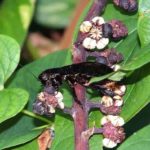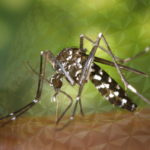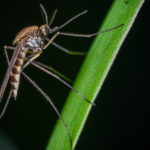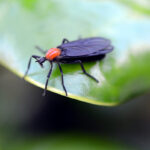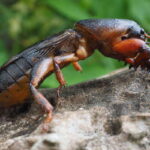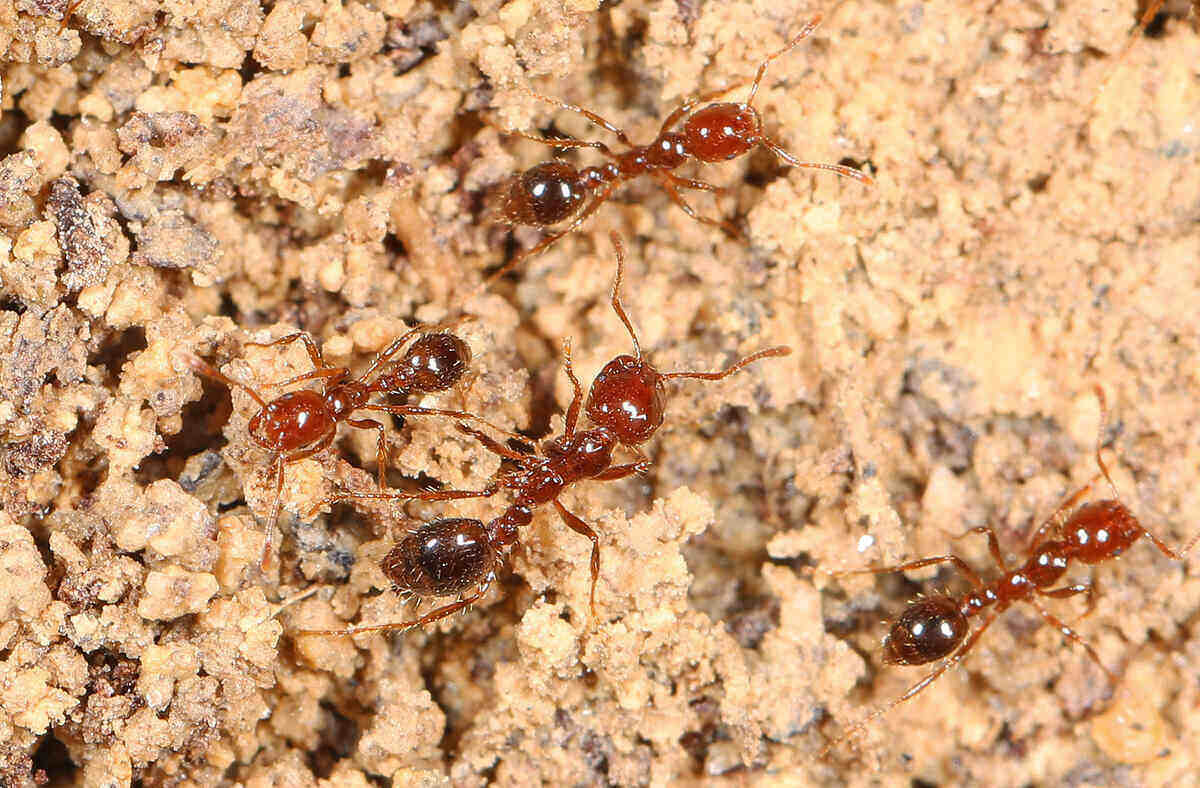
When was the last time you felt the grass beneath your bare feet? Probably not since those ferocious fire ants moved into your Orlando lawn. In this article, we’ll show you how to get rid of fire ants in Orlando so you can get back to sunbathing your toes.
Fire ants are difficult to control because a colony will persevere as long as its queen is alive. Pouring hot water over the mounds might kill portions of the colony, but it won’t guarantee the queen is destroyed. The best way to remove fire ants from the yard is to follow a simple two-step method that involves broadcast bait insecticides and spot-treatments. Let’s get started.
What Are Fire Ants?
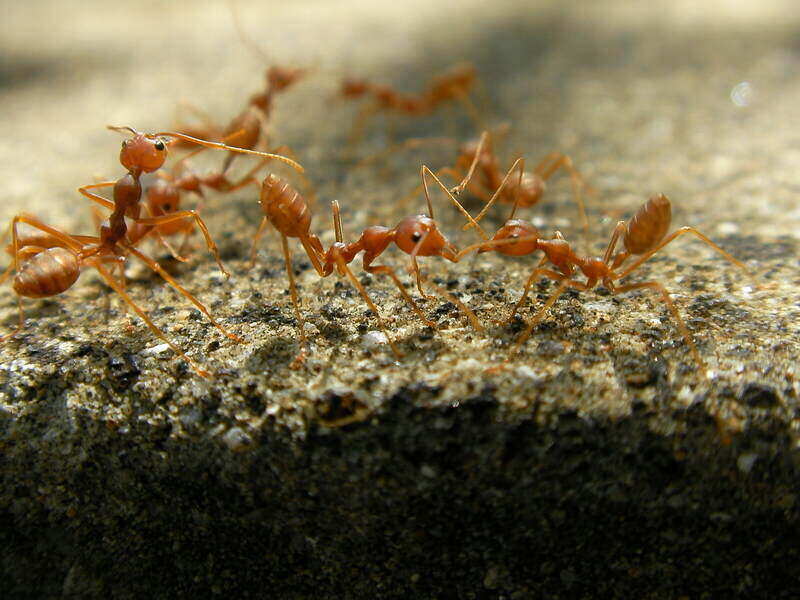
Florida is home to two fire ant species. The most common is Solenopsis invicta, the red imported fire ant (RIFA). The second species is the far less common Solenopsis geminata, which is a native fire ant.
RIFAs frequently invade lawns, parks, schoolyards, and sports fields. RIFAs are native to South America and notorious for their aggressive behavior. The RIFA was introduced to the United States at the port of Mobile, Alabama, around the 1930s.
Without natural predators, the invasive species has wiped out several native ant species and seized land throughout the southern United States, inhabiting all or parts of:
- Alabama
- Arkansas
- California
- Florida
- Georgia
- Louisiana
- Mississippi
- New Mexico
- North Carolina
- Oklahoma
- Puerto Rico
- South Carolina
- Tennessee
- Texas
- Virginia
How to Get Rid of Fire Ants
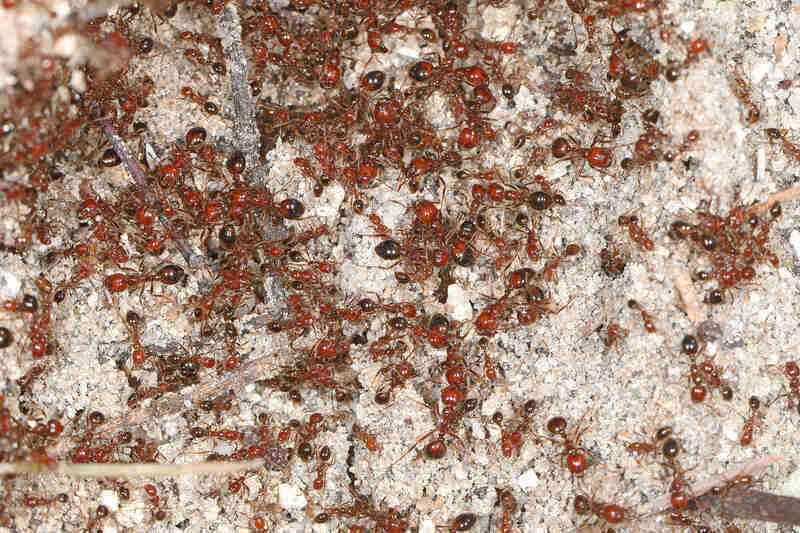
When your lawn has piles of sand-like, fluffy soil, it might have become a home to fire ants. If reddish-black ants explode from the ground when their mound is touched, they are likely fire ants.
Although it’s possible to get rid of fire ants, there is some bad news: It’s not possible to eliminate fire ants permanently. They have a knack for reinfesting lawns, sometimes as soon as one month after treatment.
To remove fire ants from your yard, follow this two-step process: Apply an ant bait insecticide across the yard and then perform spot-treatments on the mounds.
Step 1: Bait Insecticide
Squashing foraging fire ants won’t do much good to control an infestation. It’s the queen ant you need to target if you want to take down a fire ant colony. That’s why you need bait insecticide.
When you apply a bait insecticide to your lawn, foraging ants will bring the bait back to the queen as food. When she consumes it, she’ll either perish or become sterile.
But you’ll need to be patient because baits are slow-acting, and it can take weeks to months to gain 80% to 90% control.
Broadcast granular bait insecticide over the entire lawn one to two times per year. Even when you don’t see large fire ant mounds in your yard just yet, it’s still good to apply the insecticide as a preventative measure. The bait can prevent a small colony from turning into a large army of fire ants.
Here are some tips to keep in mind when applying bait insecticide:
- Use fresh bait from an unopened container.
- Apply the bait when the ground is dry, and rain isn’t expected for 48 hours.
- Apply the bait in the late afternoon or evening when ants are foraging for food.
- Always read and follow the insecticide’s directions to determine when and how to apply it.
- Use a bait insecticide labeled for fire ant control. Products containing hydramethylnon or sulfluramid can offer effective control. Organic insecticides are also available in stores.
Step 2: Spot-Treatments
The next step is to locate and directly target the anthills with a chemical treatment (or hot water, if you want to keep it eco-friendly). This step intends to destroy as much of the colony as possible and, if you’re lucky, the queen. There are several options for this step.
- Surface dust: Sprinkle a dust insecticide over the mound’s surface and water it into the ground.
- Mound drench: Pour a toxic liquid onto the ant mound. Remember to read and follow all labeled instructions, as you may need to mix some mound drenches with water.
- Mound injections: This fire ant treatment is just as it sounds – insecticides are injected into the mound instead of drenched. Mound injections are often more expensive but more effective than mound drenches.
- Baits: Baits can be used as a broadcast treatment and spot treatment. Although slow-acting, this spot-treatment is the most effective against the queen. Foraging ants will feed the toxic bait to the queen, while drenches, injections, surface dust, and hot water aren’t always guaranteed to reach the queen.
How to Get Rid of Fire Ants Naturally
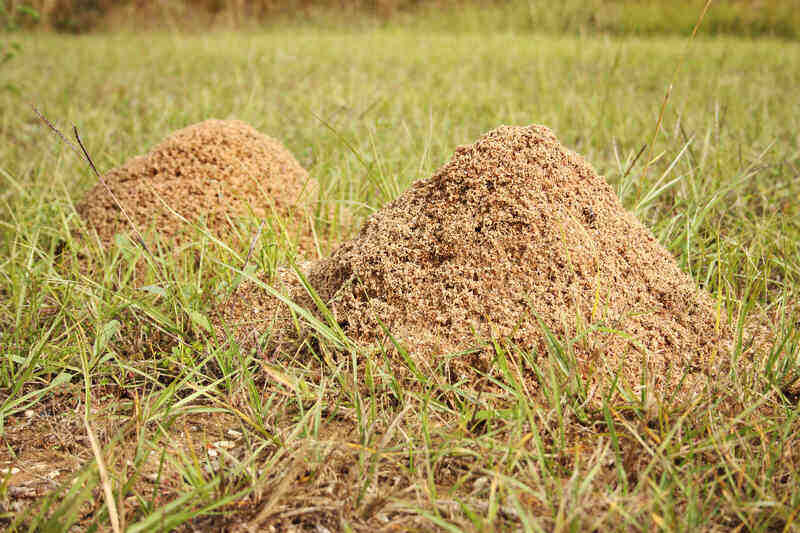
Natural methods for fire ant control help avoid the use of synthetic pesticides. However, they can sometimes put you in harm’s way. It can also be difficult to eliminate a colony with natural methods that skip the bait broadcast treatment step, which is essential for targeting the queen.
Despite being less effective than most inorganic approaches, natural methods can still provide some control against fire ants.
Pouring Hot Water
According to the University of Georgia Extension, pouring approximately 3 gallons of very hot (almost boiling) water on each mound can eliminate about 60% of treated mounds. Remember to be careful when handling hot water, especially around children and pets.
Manual Removal
Excavating a fire ant nest can help remove a colony from the ground, but this can prove a laborious and time-consuming task (not to mention you’ll need to patch up the excavated hole).
You also risk exposing yourself to angry, stinging ants. To help protect yourself against a fearsome attack, apply baby powder or talcum powder to the shovel handle and inside the buckets where you plan to dump the nest. The powder will prevent the ants from crawling up the equipment and stinging you.
How to Prevent Fire Ants
Once you’ve gained control over fire ants, the last thing you want is for these aggressive pests to return to your lawn. Fire ants are always on the prowl in Florida, looking for a lovely sunny yard where they can take shelter and be near food and water. Here’s what you can do to keep them at bay:
- Broadcast a bait insecticide across the lawn. The bait will kill off ants trying to establish a colony.
- Seal cracks and crevices around your home so fire ants can’t sneak inside.
- Trim back trees and shrubs that are touching your house. Otherwise, fire ants might use the branches as a bridge to enter your home or rain gutters.
- Mow the lawn regularly so that fire ants can’t take cover in tall grass.
- Eliminate shelter by removing grass clippings, wood piles, leaf piles, and plant debris.
- Remove food sources by closing trash cans, sealing compost bins, and picking up ripe fruit off the ground.
- Remove water sources from the yard, such as bird baths and empty buckets collecting rain.
- Treat invasions immediately. If you wait too long to treat a fire ant infestation, the colony will grow and become harder to eradicate.
Why are Fire Ants a Problem?
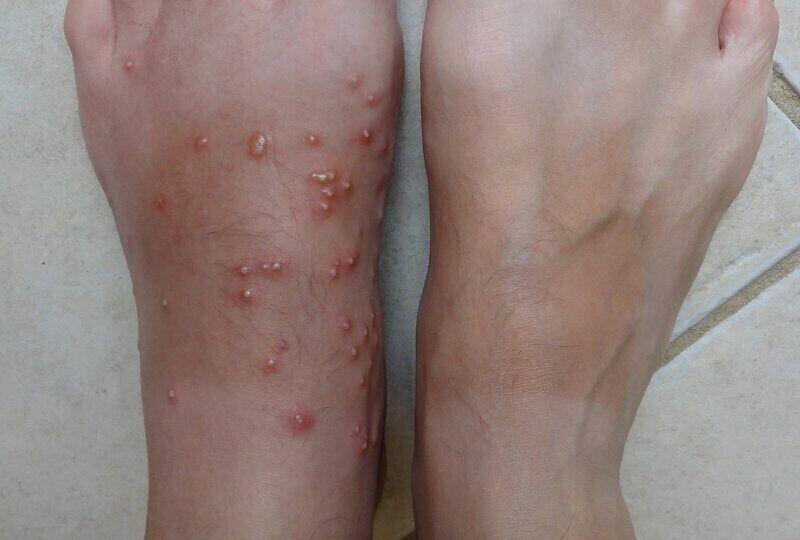
Thanks to its subtropical climate and sunny weather, Orlando is a fire ant’s paradise. But why should you keep these ants off your Florida lawn?
For starters, fire ants can turn your dream lawn into a nightmare with its aggressive stings and unsightly soil mounds, ruining outdoor pool parties and family cornhole tournaments. It also ruins electrical housing, encourages pesticide use, and makes a dent in the economy.
Fire Ants Are Aggressive
While the United States has several species of fire ants, the red imported fire ant is the biggest threat to your Orlando lawn. Why? Because the RIFA has a painful bite and sting.
The fire ant bites down on your skin to anchor itself and then injects venom with its stinger, often attacking as an army. If you disturb the mound by accident, whether you’re strolling across the lawn or sitting in the grass, the ants will explode from the ground and attack the perceived threat. When they work together as a team, fire ants can kill animals larger than they are, such as infant livestock and small pets. Yikes!
Reactions to RIFA stings vary among people. Some people may have mild reactions, while others may experience a life-threatening allergic reaction. Allergic reactions are rare, but they can happen and require immediate medical attention. Children and older adults are more vulnerable to severe complications.
Fire ant stings often cause the skin to swell or itch, and the venom can burn like fire (hence the name). The welts may eventually become swollen bumps that look like pimples.
Hiding in Electrical Housing
Fire ants are usually a problem in sunny areas of the yard. But they’ll sometimes invade electrical equipment, including air conditioning units and switch boxes. As they chew away at the insulation and build their ant nest, they may cause short circuits and equipment failures.
If a fire ant colony has invaded your electrical equipment, do not attempt to remove them yourself. Otherwise, you might be seriously injured from electrical shock. Hire a professional exterminator trained to handle electrical equipment.
Overuse of Pesticides
Fire ants return again and again. Their resilience and perseverance lead to the overuse (and misuse) of pesticides in lawns and agricultural land, which is harmful to the environment, wildlife, and humans.
Economic Impact
With a penchant for destroying electrical equipment, eating crops, and even killing newborn livestock and small pets, fire ants cause the United States to lose $6.7 billion a year. That’s a lot of money.
FAQ About Fire Ants
Fire ants might be a nuisance, but they aren’t all bad. For example, fire ants are beneficial insects in cotton and sugarcane production. Why? Because they help control caterpillars and sugarcane borers.
Spraying vinegar can help get rid of ants foraging for food, but it’s not a practical solution for controlling a whole colony. Remember, a fire ant colony will thrive as long as its queen remains alive. The best way to kill the ant queen is with a broadcast bait insecticide followed up by a spot-treatment.
Although fire and gasoline will likely kill some, but not all, of the colony, do not attempt this control method. Pouring gasoline on mounds and setting them ablaze is very dangerous and won’t guarantee the ant queen’s death. Gasoline will also kill the plants it contacts and may leach into groundwater.
Well, fire ants have a few tricks up their sleeve:
• If your neighbors don’t treat their lawn, their fire ant infestation can quickly become your problem, too.
• The red imported fire ant has no natural predators in the United States. So once homeowners eliminate one colony, there’s little to stop new colonies from taking over.
• Fire ant colonies can have multiple queens. As long as the queen remains alive, so will the colony.
• Not even floods can stop these ants from spreading from yard to yard. Fire ants even have the incredible ability to form a floating raft.
Not only do fire ants sting like fire, but they spread like fire, too. You might think you successfully exterminated an ant colony only to find them biting at your heels a week later. Once you’ve treated the area, use preventative measures to keep them away.
When to Hire a Professional
You’ve repeatedly tried to treat that fire ant mound in your yard, but the fire ants keep bursting from their nest. The chances are good that the queen is well protected, and your control methods aren’t reaching her. Contact an Orlando pest control professional who can give the ant colony a battle they won’t see coming.
And remember: Always hire a professional when fire ants are nesting in electrical equipment. You’ll be shocked to learn how tricky the job is.
Main Image Credit: Judy Gallagher / Flickr / CC BY 2.0
